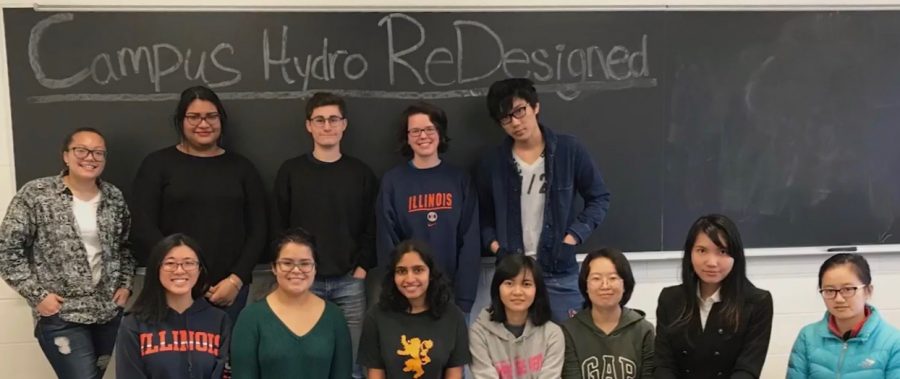UI students take first place in Campus RainWorks Challenge
May 1, 2018
A team of 13 University students won first place on Wednesday at the Environmental Protection Agency’s Campus RainWorks Challenge, a national competition that challenges college students to design solutions to stormwater pollution.
Arthur R. Schmidt, professor in civil and environmental engineering, along with several other faculty members, advised the team.
The team took first in the demonstration project category, which focuses on designing an infrastructure solution to stormwater pollution at a specific site on a college campus.
The team’s project, “Campus Hydro Redesigned,” incorporated green infrastructure practices into a parking lot with the goal of reducing flood-prone areas and mitigating stormwater runoff.
The challenge was first created so students and faculty could work together to come up with ways to apply green infrastructure design principles and to increase the use of these principles on college campuses, according to the press release.
Get The Daily Illini in your inbox!
Green infrastructure uses plants, soil and nature to manage stormwater and create healthier urban environments, Enesta Jones, press officer for the EPA, said in an email.
“While ‘gray’ stormwater infrastructure is largely designed to convey stormwater away from the built environment, green infrastructure uses natural systems or systems engineered to mimic nature to manage rainwater where it falls,” Jones said.
Jessica Wiegand, senior in Engineering and member of the team, said she and her team consulted the University’s facilities and services to find out what areas on campus had flooding issues, so that their design could potentially help the campus.
“After that, we found inspiration brainstorming ideas together,” Wiegand said. “With a highly interdisciplinary team, our different backgrounds brought in a lot of unique ideas that we combined together.”
The team’s design also looked to transform the parking lot into a place of ecological, social and aesthetic values.
“By incorporating vegetative green infrastructure practices such as rain gardens, the team’s design would transform a flood-prone parking lot with very little green space into an area rich with native plant diversity,” Jones said.







